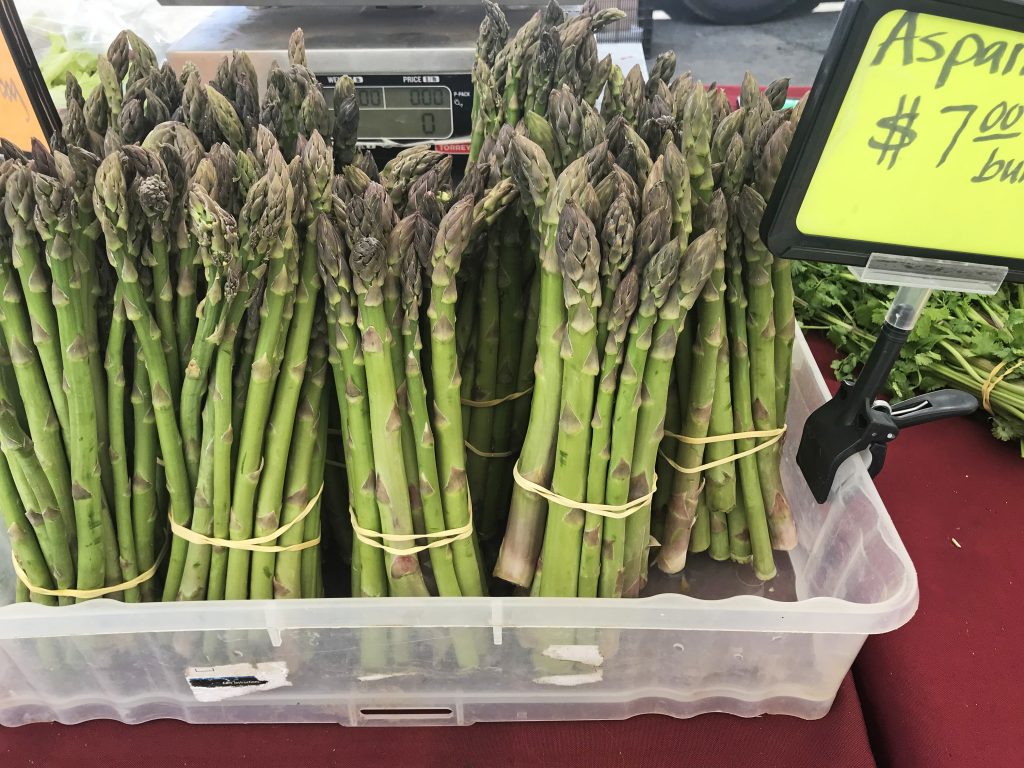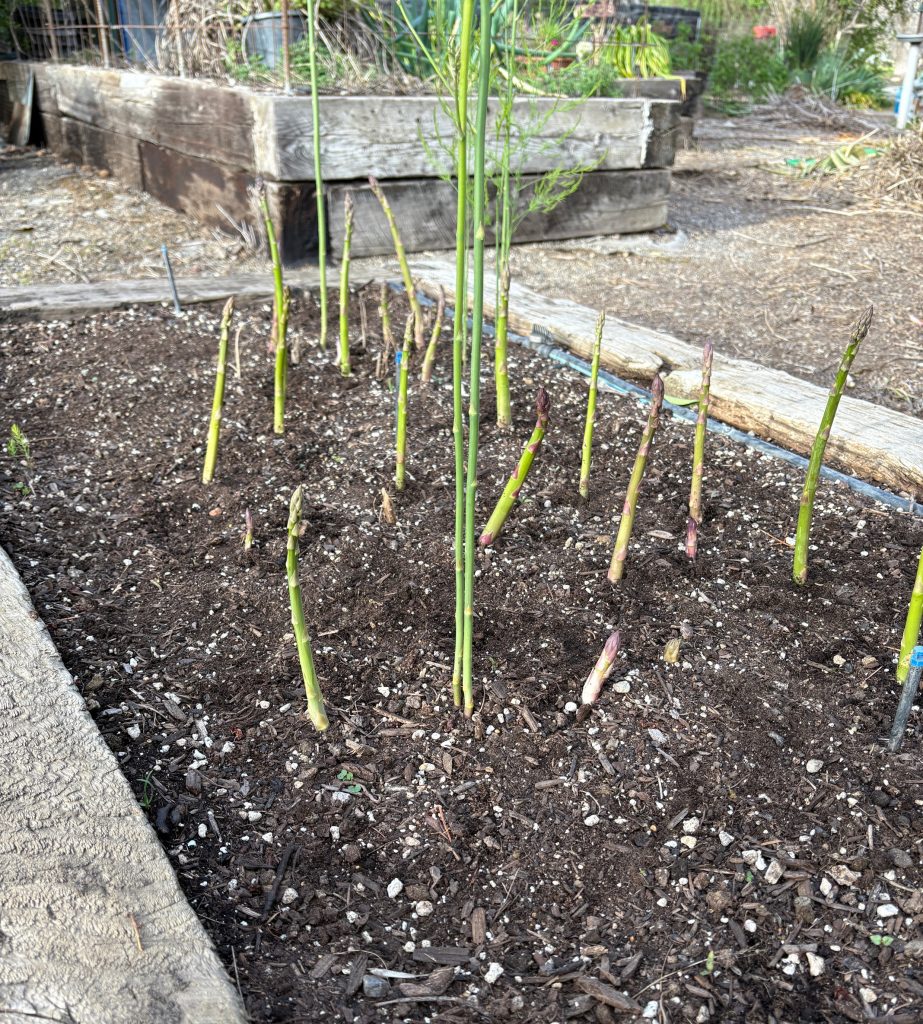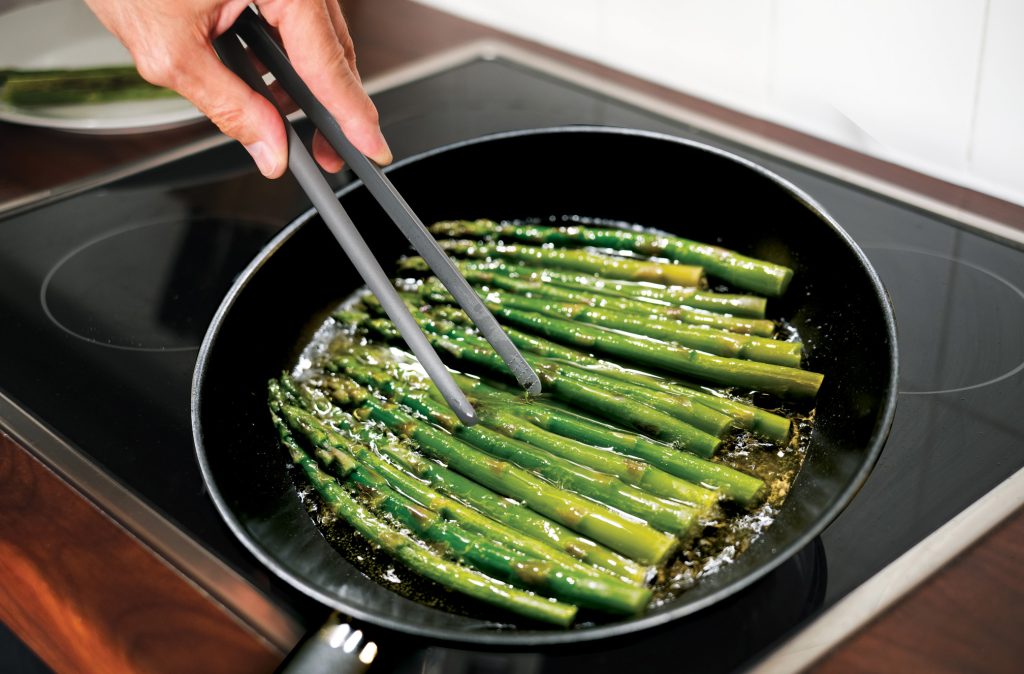
Henri divulges the details and some cooking tips for this springtime vegetable
By Henri Bourride
I was devastated. Completely humiliated. We had just finished a delightful spring meal in my apartment in the Village and should have been basking in the afterglow of good wine and conversation. Instead, L. turned on me.
“What?” I said, incredulous.
“I’m sorry, but, well, it does.”
“My pee smells bad?”
L. shrugged. “It’s no big deal. It’s just the asparagus.”
“It’s the what?”
“Look. You’re not the first.”
Oh, kill me right now.
“A lot of guys’ pee smells after they eat asparagus.”
I couldn’t take any more. “You should leave,” I said, pouring the last of the wine into my glass.
L. stood, headed for the door, turned, and shrugged. “I didn’t mean to give you PeeTSD.”
“Not funny,” I snapped as the door clicked shut.
I repaired to the living room and lay down on the couch, a moistened dish towel across my forehead.
That was many years ago, long before I came out to Chico the first time, and, as it turned out, I may have overreacted. (Moi?)
Asparagus, Henri has since learned, contains certain chemical compounds that break down into amino acids during digestion and cause urine to take on a sulfurous odor. And while researchers aren’t sure exactly why, not everyone’s body is genetically wired to react in the same way—to the asparagus and the odor. Some people’s bodies produce the odor, and some don’t. Some people can detect the odor, and some can’t.
Which, of course, explains our little contretemps back in the Village. Henri is programmed to produce the odor, L. to detect it.
Apologies for the perhaps inappropriate digression, but Henri’s been thinking a lot lately about asparagus, its appearance at the markets a sure sign that spring is here.
Asparagus as a food dates at least to ancient Greece, growing wild throughout the Mediterranean as reeds in shallow waters—it can reach heights of up to six feet. Beginning in the early 17th century, it was cultivated in French monasteries. Most sources agree that European settlers brought asparagus to the New World in middle of the 17th century, though it wasn’t grown commercially until the 1860s. While green asparagus is by the far the most common, there are also white and purple varieties.

Of course, the Chico area is well-known for its Mediterranean climate (see: olives, lavender, palms, pomegranates, artichokes, and grapes). We also happen to be situated in the United States Department of Agriculture’s Zone 9 (at least until DOGE finds us), which is ideal for, oui, you guessed it, asparagus.
And it’s why you’ll see it at the local farmers’ markets throughout the spring, as well as in bins at S&S Produce, Chico Natural Foods Cooperative (the Co-op), and New Earth Market.
Asparagus is relatively easy for home gardeners to grow, preferring full sun and well-drained soil. You can plant from seeds or starts, even the crowns themselves. For information on planting your own crop, visit keeneorganics.com/product-category/asparagus
Asparagus is also an excellent source of nutrients and vitamins, as well as quick and easy to prepare. The following are a couple of Henri’s favorite asparagus recipes. The first makes for a delicious side dish. The second is a meal in itself—serve it with a pinot grigio or sauvignon blanc.
Note: 1) For cooked asparagus, you should use spears that are at least a quarter inch at the base—it’s too easy to overcook the very thin ones. 2) Before cooking, cut the bottom inch or so off each spear. 3) When cutting into bite-sized pieces, slice the spears diagonally.

Stovetop asparagus with red bell peppers, capers and feta
Cut a red bell pepper into bite-sized pieces, and sauté in a tablespoon of olive oil until soft—8 to 10 minutes. Place in bowl and cover with damp dish towel. Add 1 tablespoon of butter or margarine to the pan, and cook asparagus, turning with a pair of tongs, until crisp and bright green. Remove and place on serving platter, and top with bell pepper pieces. Sprinkle 1/4 cup of feta over the peppers, and then top with 1 tablespoon of capers.
Pasta salad with asparagus and chicken
Cut 1 pound of asparagus spears into bite-sized pieces. Cook in boiling water until tender (4 to 5 minutes). Cut 1/2 lb. skinless/boneless chicken thighs into bite-sized pieces. Boil until tender (4 to 5 minutes). Transfer asparagus to bowl of ice water. When cool, place on dish towel or paper towel to drain. Add 6 ounces dry pasta (penne, bowtie, etc.) to boiling water. When done, drain and rinse pasta with cold water. Mix pasta and asparagus in a large bowl, and add the chicken. Toss with the following dressing:
Mix together 1/2 cup rice wine vinegar, 1/4 cup grated Parmesan cheese, 2 teaspoons minced basil, 1 teaspoon minced oregano, 3 tablespoons olive oil, 1 tablespoon Sierra Nevada German-style Whole-seed Mustard (or any mustard with a decent bite), and 2 cloves pressed garlic.
For whatever reason, most likely linked to my mostly companionless last decade and a half, Henri’s PeeTSD is no longer an issue.

Be the first to comment